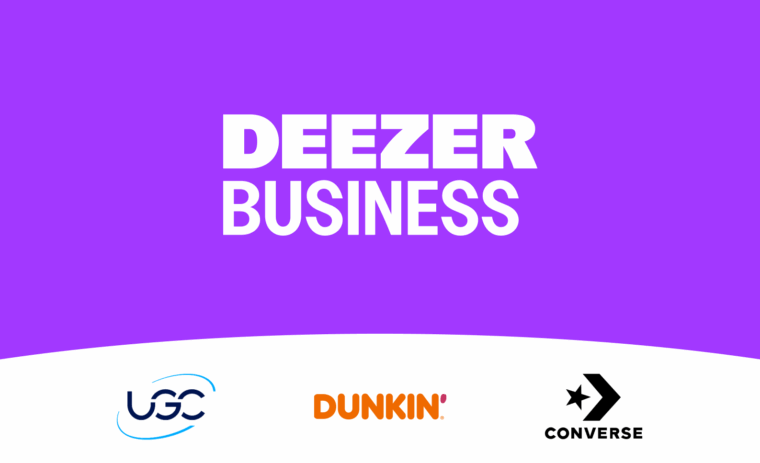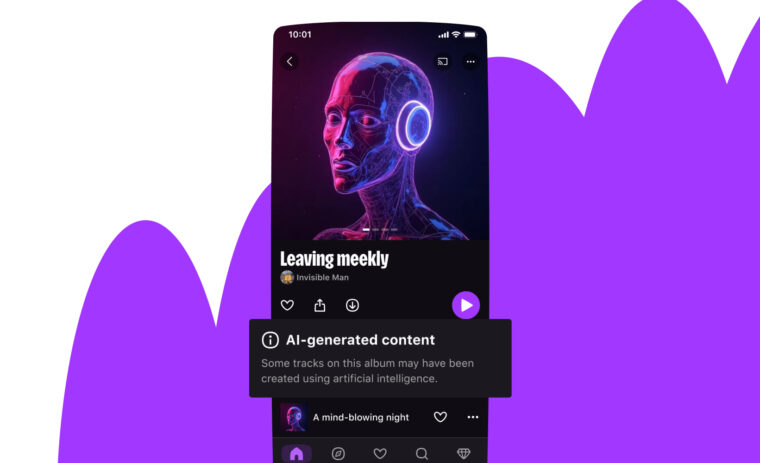In short
We hosted the 2018 ISMIR edition of the HAMR Hackathon. It was awesome, people from all over the world collaborated on fun and innovative research topics during two days. A lot of very cool projects emerged. Most of them won’t stick but some will, and that -you have to admit- is the beauty of it!
A little bit of context
Music Information Retrieval (a.k.a. MIR) is a research field that overlaps various scientific disciplines such as signal processing, machine learning, computer science but also musicology, psychology, acoustics etc. Roughly speaking, MIR researchers are a community of curious people interested in dissecting music. They try to detect notes in audio files, transcribe lyrics, separate the drum part from the other instruments, estimate keys, chords, tempos, synthesize new sounds or model the styles of classical composers, among other things. Every year the community gathers for its ritual scientific conference called ISMIR. This year it was held in Paris and co-organized by Ircam and Telecom ParisTech.

At Deezer we do some MIR too, especially in the R&D team. Actually this year we had three papers accepted at ISMIR. One on estimating the mood of a track using its audio content and its associated lyrics, another on disambiguating artists using their music and a third one on overcoming musical genre ambiguities through audio analysis. Cool stuff, but let’s save that for another post.
For some years now, Colin Raffel and friends have organized hackathons called HAMR for Hacking Audio and Music Research. Since 2014, special HAMRs have been organized in conjonction with ISMIR. It turns out that we are super friends with this year’s general chairs of ISMIR so when they asked us if we wanted to host a hackathon as a satellite event we said yes right away. After reaching out to Colin, we agreed to co-organize HAMR@ISMIR2018 at Deezer HQ. This is what took place on September 21–22.

HAMR goals and participants
Unlike other hackathons such as MusicHackDays, the goal of HAMR is to trigger emulation between MIR researchers and have them work on new research ideas. During this 2-day event, participants are encouraged to identify these uncharted MIR territories, form teams and start exploring.
It may seem a highly ambitious project but the purpose is more the exploration itself than the results. Popular vote actually designates three winning teams for Best Research Idea, Best Code and Best Documentation. Participants are encouraged to draft a scientific document describing their idea and how far they’ve gone exploring it.
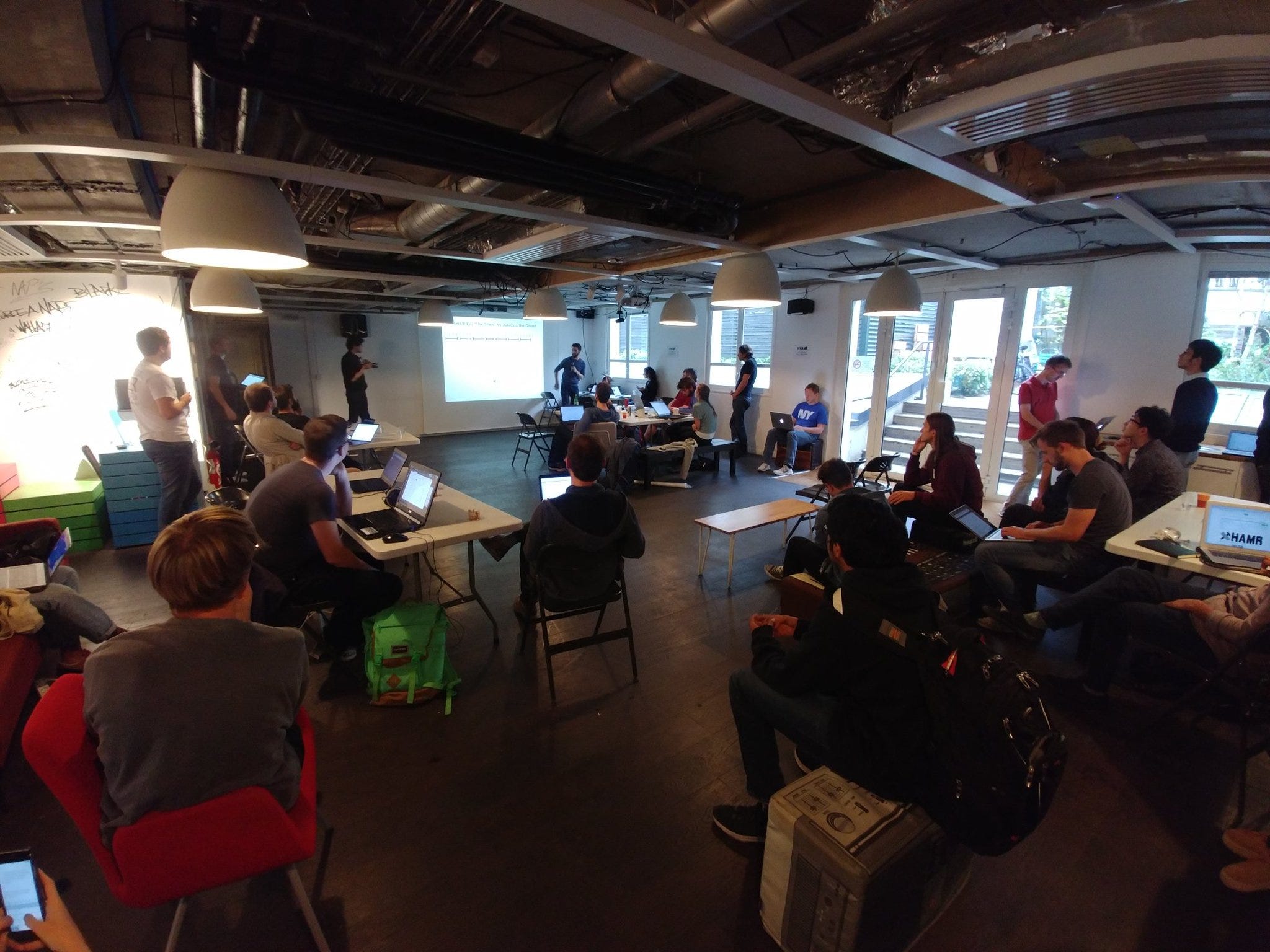
Participants are mostly ISMIR attendants, i.e. either young researchers, PhD students, engineers or even some respected professors. They came from France, Germany, South Korea, Brazil, Spain, UK, Finland, Austria, US, Japan, Netherlands, Norway and probably from a few other places. We welcomed 50 people in total in our Paris office.
How it went
Well, it went well according to pretty much everyone I’ve talked to! The food was very good -as expected from a Paris held event- and I must say I was positively surprised by how easily people talked to each other, formed teams and how efficient they were in their collaboration. We invited Hash Riaz from Abbey Road as an event partner and observer and he shared our opinion. We tried to render the nice, productive atmosphere in the following video.
Winners
First of all, all the code and documentation that were produced are accessible on our github page so you should definitely go there to have a look.
Now in details, the award for Best Code went to Chris Trailie and his FaceJam project! Chris combined audio analysis and image manipulation techniques to animate still pictures of faces according to the rhythm and the timbral landscape of the music. Go check the video, it’s quite.. something!
Best documentation went to the Neural Bubble Beat project. The team consisted of people from Linz and Wien universities and aimed at using a physical model to visualize inner activations of neural networks fed with music. The idea is quite complex because it requires to synchronize 3 different networks respectively detecting the downbeat, a drum transcript and timbral features of the music.
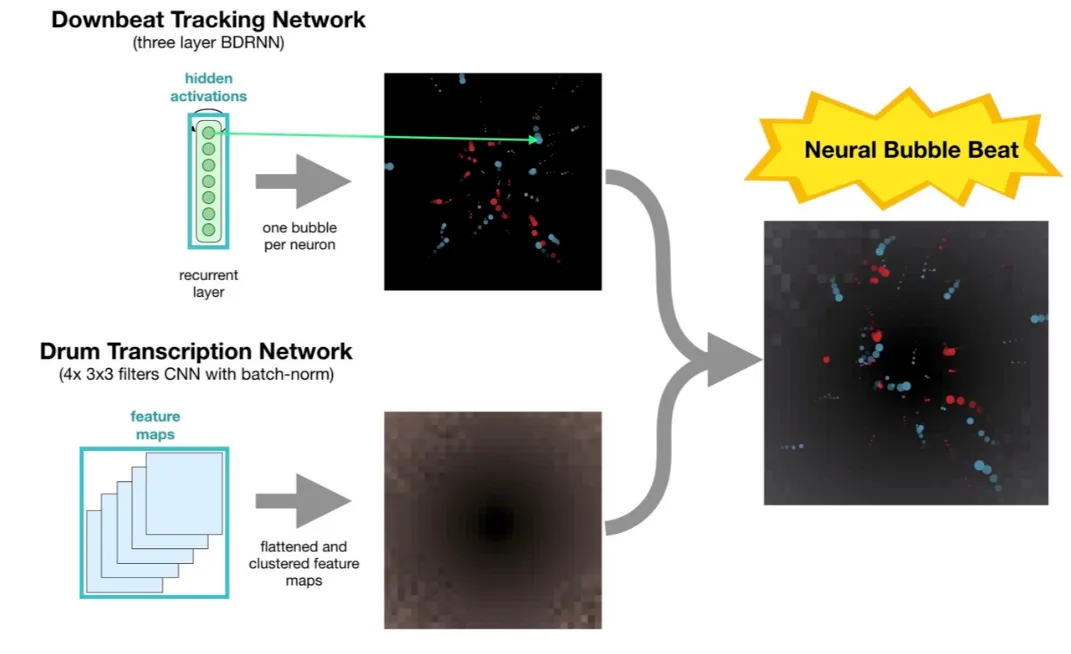
The result is quite convincing when you think that what you see actually comes from the true activations of the networks. The physical model they use to animate the bubbles is a great idea, giving the whole visualization a very natural feeling.
Best Research Idea was awarded to the Meter Anomaly project that tackles a very annoying phenomenon arising in beat tracking systems, namely that some songs have signature changes that mess up traditional algorithm outputs.

To overcome this, the team proposed to compute several self-similarity matrices with various phase shifts and use them to detect consistent segments and unusual bars:

Deezer Special Prize

A special prize for the most interesting topic for music streaming services was awarded to a group of four just-started PhD students from all over the world. They addressed the issue of describing music consumer profiles not by using traditional music similarity schemes but by learning an embedding space of user tastes. A core idea is then to focus on learning the variance of a user profile in such space, which gives insights not only on what kind of music a user like, but also on how far from it he can wander in his musical explorations.

Abbey Road Red Hackathon
Prior to organizing the event, we talked to Abbey Road studios in London who were very interested in attending HAMR and took the opportunity to promote their own upcoming Abbey Road Red Hackathon that will take place in the mythical Studio 1 on November 10–11. Hashim awarded one Golden Ticket to one of the participants who will be able to travel to London and attend the event!
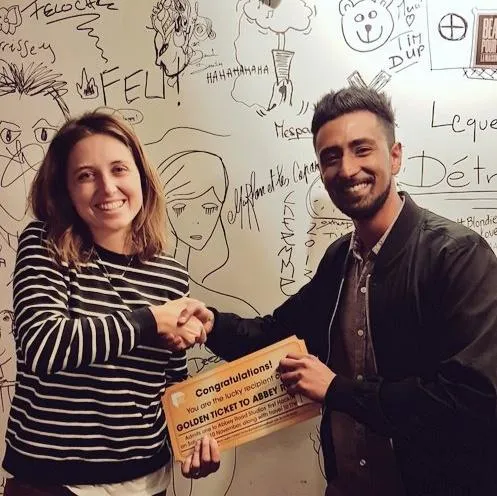
Conclusion
Thanks to all the participants! It was a great experience and I hope you enjoyed it as much as we did. See you next year at ISMIR and hopefully some day back in Paris, at Deezer.



